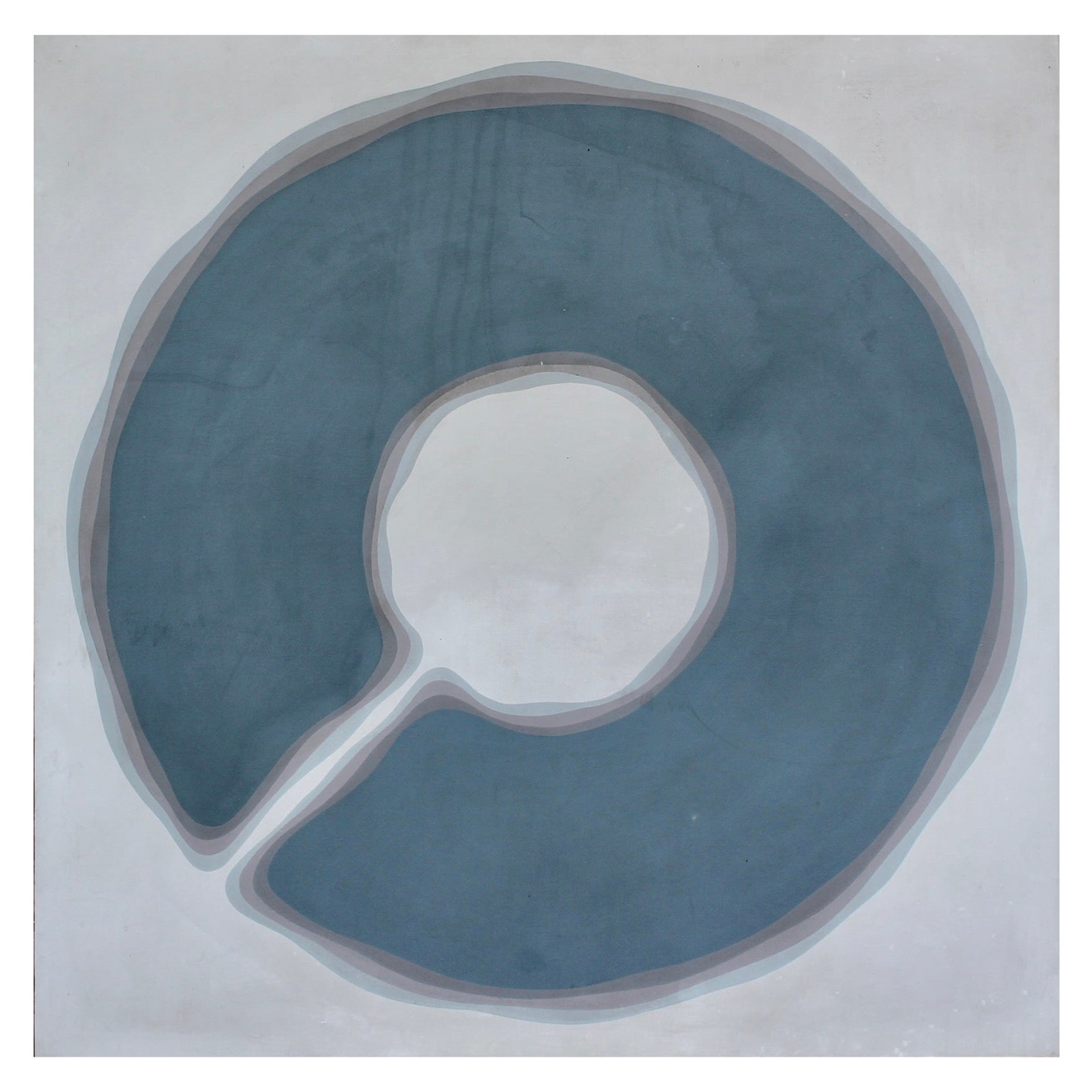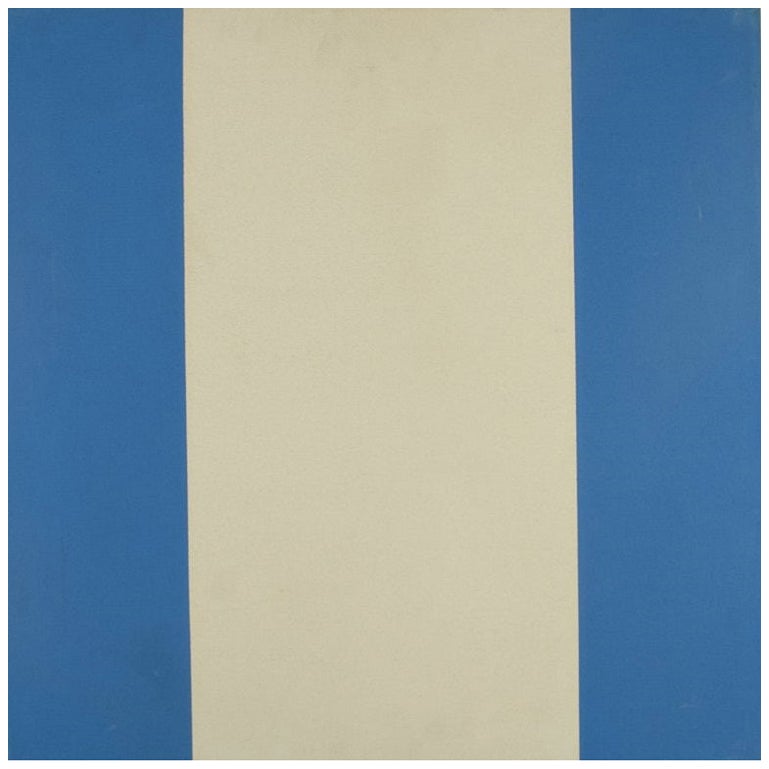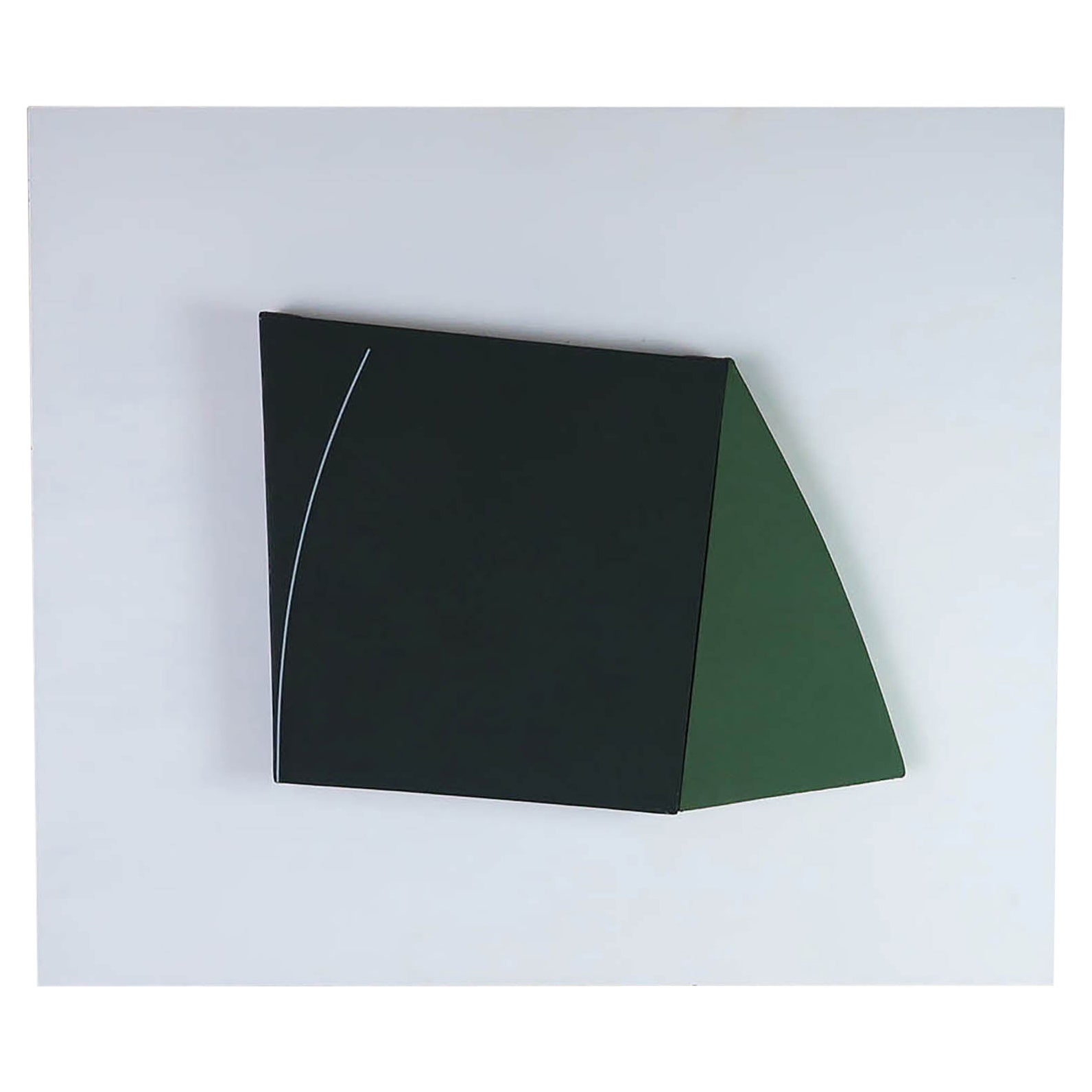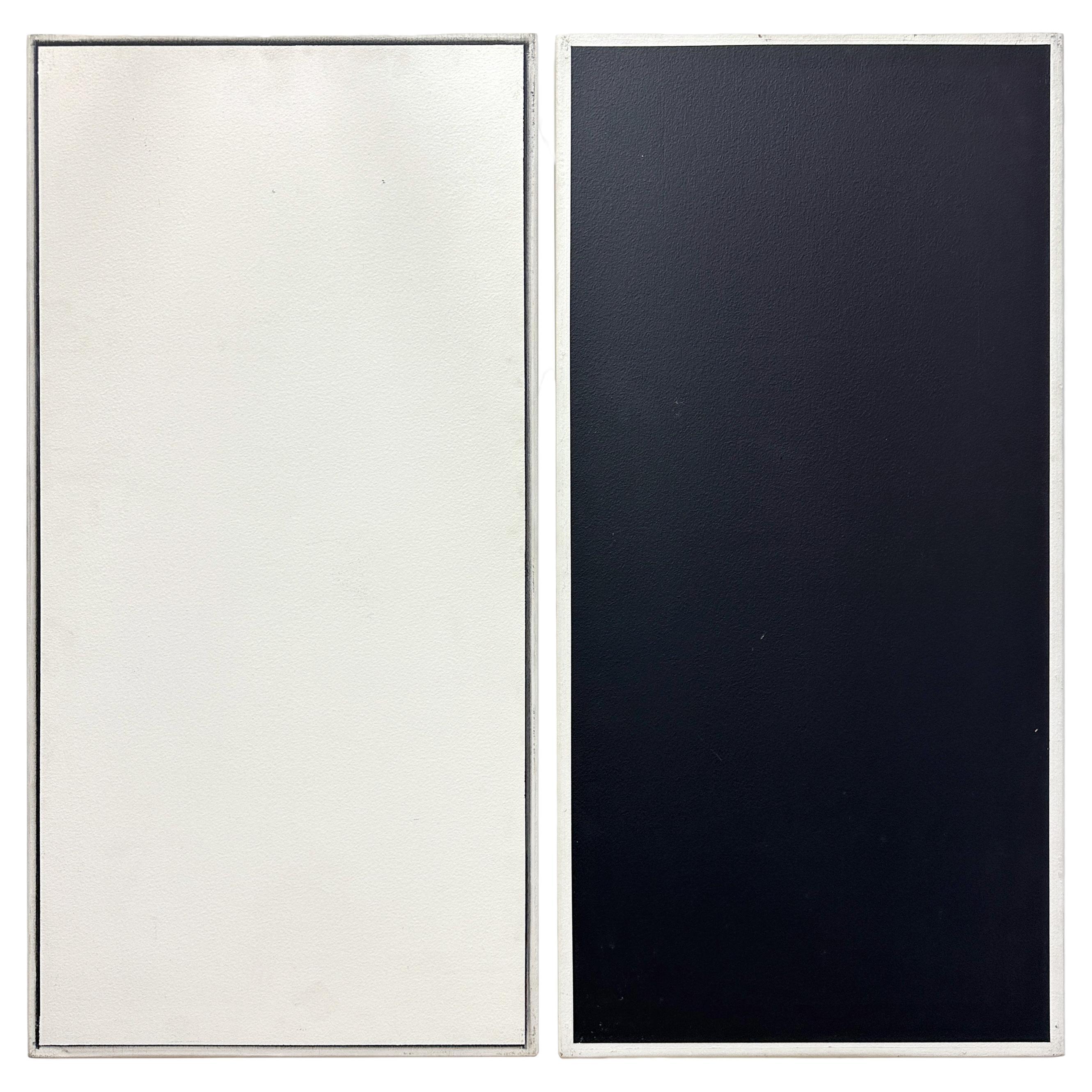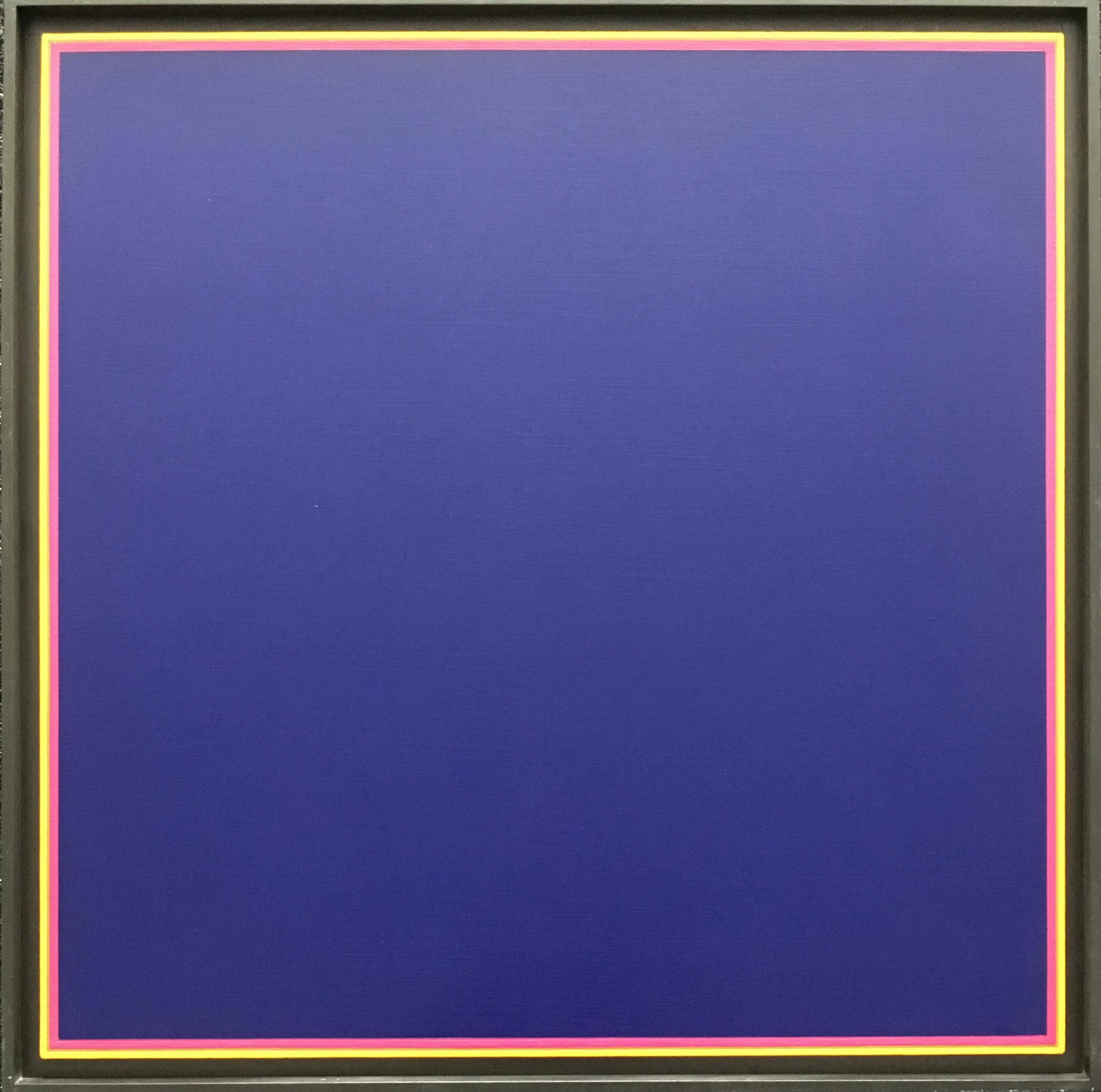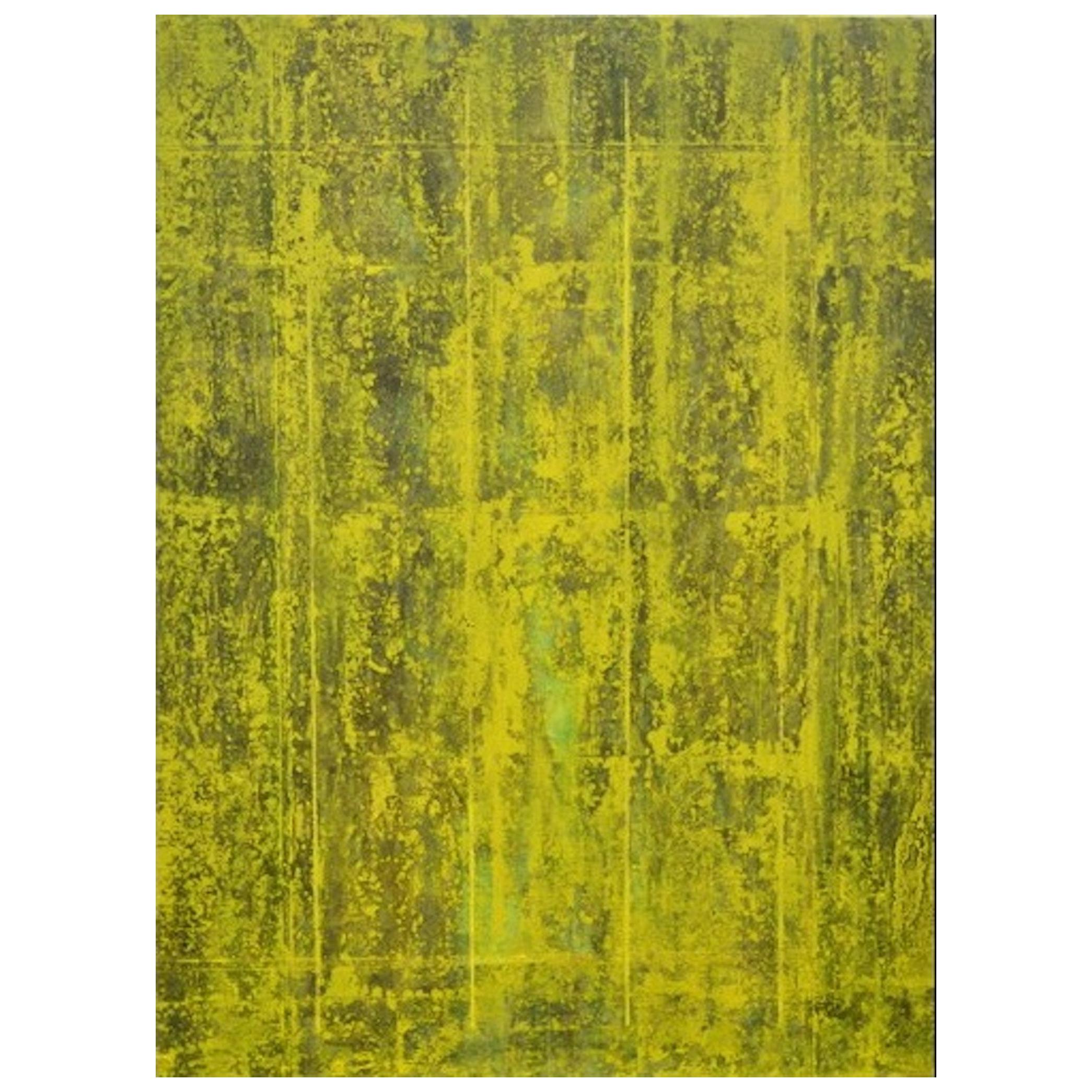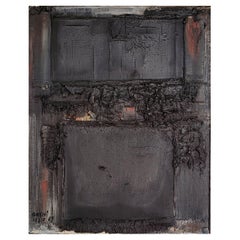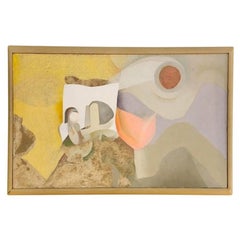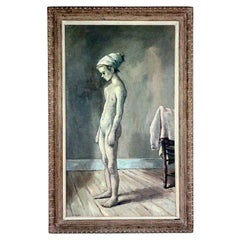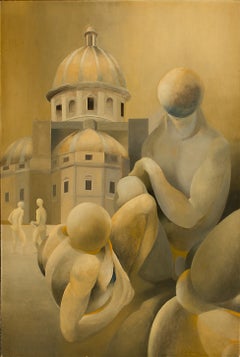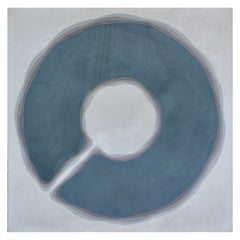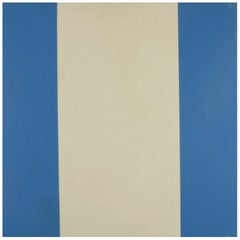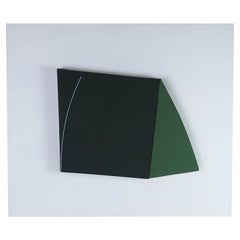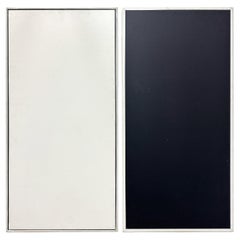Items Similar to Naohiko Inukai Oil On Canvas 1966
Video Loading
Want more images or videos?
Request additional images or videos from the seller
1 of 9
Naohiko Inukai Oil On Canvas 1966
$9,800
£7,407.59
€8,512.63
CA$13,646.44
A$15,181.11
CHF 7,958.13
MX$185,509.40
NOK 101,336.80
SEK 95,394.58
DKK 63,543.57
Shipping
Retrieving quote...The 1stDibs Promise:
Authenticity Guarantee,
Money-Back Guarantee,
24-Hour Cancellation
About the Item
A fantastic original oil on canvas by Naohiko Inukai. This is number forty in a series of colored scapes he created in the mid 1960's and is in excellent condition. This work is signed and dated on the reverse
It's color changes subtly with the lighting, when properly lit it casts a beautiful warm orange tone throughout the room.
Born in 1937 in Kurashiki-city Okayama,Japan. He came to the US around 1960 and returned to Japan around 1982 were he still resides.
Education:Cooper Union School of Art and Architecture New York City: B.F.A.1963-1967
Naohiko Inukai was largely inspired by the 1950s. New York City became the focus for modernism on an international scale during the Post-War period. Many artists had traveled to the city during the Second World War, fleeing in exile from Europe. This led to a significant pooling of talent and ideas. Influential Europeans such as Piet Mondrian, Josef Albers and Hans Hoffmann provided inspiration for American artists whilst in New York, and influenced cultural growth in the United States for many subsequent decades. Jackson Pollock, Willem de Kooning, Mark Rothko, Frank Kline, Barnett Newman, Clyfford Still and Adolph Gottlieb were influential artists of this period. The male dominated environment has been subsequently revised to acknowledge the contributions of female artists such as Lee Krasner, Joan Mitchell, and Louise Bourgeois, amongst others.
1937 Kurashiki-city Okayama,Japan Education Cooper Union School of Art and Architecture New York City: B.F.A.1963-1967 Exhibitions;
One Man, Stempfli Gallery,New York City (1966,1968)
O.K.Harris Gallery,New York City (1974) Group
Second Kent Invitational Exhibition of Contemporary Art
Ornamental Tendency in Contemporary Art, Berlin
Artist Forum Show, Dartmouth College(1968-1971)
Expo’70 , Osaka ,Japan Time Life & Inc.
- Dimensions:Height: 40 in (101.6 cm)Width: 40 in (101.6 cm)Depth: 2 in (5.08 cm)
- Style:Minimalist (Of the Period)
- Materials and Techniques:
- Place of Origin:
- Period:
- Date of Manufacture:1966
- Condition:Wear consistent with age and use. This work is an excellent original condition.
- Seller Location:Hudson, NY
- Reference Number:1stDibs: LU8210234135682
About the Seller
5.0
Vetted Professional Seller
Every seller passes strict standards for authenticity and reliability
Established in 1991
1stDibs seller since 2023
15 sales on 1stDibs
Typical response time: <1 hour
- ShippingRetrieving quote...Shipping from: Hudson, NY
- Return Policy
Authenticity Guarantee
In the unlikely event there’s an issue with an item’s authenticity, contact us within 1 year for a full refund. DetailsMoney-Back Guarantee
If your item is not as described, is damaged in transit, or does not arrive, contact us within 7 days for a full refund. Details24-Hour Cancellation
You have a 24-hour grace period in which to reconsider your purchase, with no questions asked.Vetted Professional Sellers
Our world-class sellers must adhere to strict standards for service and quality, maintaining the integrity of our listings.Price-Match Guarantee
If you find that a seller listed the same item for a lower price elsewhere, we’ll match it.Trusted Global Delivery
Our best-in-class carrier network provides specialized shipping options worldwide, including custom delivery.More From This Seller
View AllAvshalom Okashi Abstract Composition Oil on Canvas Dated 1961
By Avshalom Okashi
Located in Hudson, NY
Okashi was born in Israel and studied painting while working as a Shepard in Galilee.
His early work was figurative and his later work featured bold abstracts, which established hi...
Category
Mid-20th Century Israeli Mid-Century Modern Paintings
Materials
Canvas, Paint
Untitled by Allen Atwell, Oil on Linen, 1952
By Allen Atwell
Located in Hudson, NY
A rare gem of a piece. Untitled by Allen Atwell, creator of the Psychedelic Temple in 1964.
His works become available few and far between.
Measure: 10 x 16 in., 11 1/2 x 17 1/2 in. ...
Category
Vintage 1950s American Mid-Century Modern Paintings
Materials
Canvas, Paint
Alexander Brook Painting Dated 1955
By Alexander Brook
Located in Hudson, NY
Signed dated ad titled “The Irresistible Landscape”. This painting was personal to the artist as Brook was born on July 14, 1898 ad at the age of twelve was bed-ridden with Polio. This painting is a self-portrait showing the artist looking out the windows of the room he rarely was able to leave.
This painting was exhibited at the Pennsylvania Academy of Fie Arts ad the Ogunquit Museum Of America Art, exhibition tags from both institutions are attached to the stretcher en verso.
Born in Brooklyn, New York, Alexander Brook was a realist painter, whose works consisted mostly of still-life subjects, landscapes, and figures, often of women. He was very successful in his day, winning second prize to Picasso's first prize at the Carnegie Institute International Exhibition of Modern Painting in 1930. In New York, he studied at the Art Students League between the years of 1914-1918. It was at the Art Students League that Brook developed significant relationships with Niles Spencer, Reginald Marsh, Kenneth Hays Miller, Yasuo Kuniyoshi and, perhaps most significantly, Peggy Bacon, whom he married in 1920. Along with Kenneth Hayes Miller, Brook studied with John C. Johansen, Frank V. DuMond, George Bridgeman and Dimitri Romanofski. Within this group lay the foundations of American Realism. Brook was a member of the Society of Independent Artists, who rebelled against the strictures of the National Academy of Design. In 1938 Brook traveled to Savannah, Georgia, there he did some of his most provocative work. After two years in the South, Bacon and Brook were divorced. Brook later married the painter Gina Knee.
During the years 1928 through 1939, Alexander Brook had works in over one-hundred exhibitions, fifteen of which were one man shows. By 1942, Brook had resumed teaching at the Art Students League. Demand for the artist's work kept him in significant collections, galleries, and museums, including the Downtown Gallery (New York), the National Academy of Design, the Rehn Gallery, the Larcada and the Knoedler galleries. Some feel Brook may have retreated from the art world with the rise of Abstract Expressionism, although a sketchbook that he kept from 1949 to 1951 reveals an active engagement in painting and served multi purposes--a repository for his ideas, an address book, notebook, and travel diary. Of special interest are his notes on watercolor technique. It also includes tips for using new painting tools...
Category
Vintage 1950s American Mid-Century Modern Paintings
Materials
Canvas, Paint
Surrealist Painting By Charles Oscar American Circa 1956
By Charles Oscar
Located in Hudson, NY
A rare piece to be found. Due to his early demise the number of works available by this artist are limited. His work can be found in every major collection in the United States. He was a Guggenheim Fellow, Museum of Modern Art Curator and rising Futurist Artist who was murdered in his New York apartment in 1961 when he was only 38 years old.
Titled "Hypnerotomachia", the name means 'the act of falling in love in a dream'. This amazing and rare piece was created just one year after his success with exhibiting at the Venice Biennale of 1956. Semi-abstract composition and very dream like. This painting retains the original carved and gilded Hydenryk frame and has been professionally cleaned and conserved.
His work can be found in every major collection in the United States. Charles Oscar...
Category
Vintage 1950s American Mid-Century Modern Paintings
Materials
Gold Leaf
Balcomb Greene Wind Ocean Sun 1963
By Balcomb Greene
Located in Hudson, NY
Wind, Ocean, Sun by Balcomb Greene painted in 1963. Signed on the front titled and dated on the reverse.
Paintings of the Montauk coast by Balcomb Greene are few and far between. Thi...
Category
Vintage 1960s American Mid-Century Modern Paintings
Materials
Canvas, Paint
Price Upon Request
Balcomb Greene "The Cliffs", 1978
By Balcomb Greene
Located in Hudson, NY
The Cliffs by Balcomb Greene painted in 1978. Signed on the front titled and dated on the reverse.
Paintings of the Montauk coast by Balcomb Greene are few and far between. This painting likely created at his Studio in Montauk New York. Painting is in excellent original condition and retains the original gallery frame.
provenance: Estate of Gertrude B. Pascal / Gifted from the previous in 1987, The Frances Lehman Loeb Art Center, Vassar College, Poughkeepsie, NY / Christie's, New York 2012 / Private Collection, New Jersey
Public collections:
Baltimore Museum of Art, Baltimore, MD
Brooklyn Museum, Brooklyn, NY
Cleveland Museum of Art, Cleveland, OH
The Art Institute of Chicago, Chicago, IL
Corcoran Gallery of Art, Washington, D.C.
Guild Hall, East Hampton, NY
Wadsworth Atheneum, Hartford, CT
Museum of Fine Arts, Houston, TX
Indianapolis Museum of Art, Indianapolis, IN
Metropolitan Museum of Art, New York, NY
Museum of Modern Art, New York, NY
National Museum of American Art, Washington, D.C.
Joslyn Art Museum, Omaha, NE
Pennsylvania Academy of the Fine Arts, Philadelphia, PA
Norton Simon Museum, Pasadena, CA
Portland Museum of Art, Portland, OR
Neuberger Museum, Purchase, NY
Solomon R. Guggenheim Museum, New York, NY
Parrish Museum, Southampton, NY
Whitney Museum of American Art, New York, NY
Walker Art Center, Minneapolis, MN
Butler Institute of American Art, Youngstown, OH
Boca Museum of Art, Boca Raton, FL
Over a lifespan of 86 years, Balcomb Greene followed his muse wherever it led, unfettered by what had come before, unafraid of where the future might lead. Despite a series of different pathways explored, his purpose remained ever constant: to express truth as he found it and communicate it to a broader audience. In the 1930s, Greene was a young artist committed to abstraction as his expressive language. Greene’s paintings and collages of the 1930s reflect the influence of Pablo Picasso and Piet Mondrian and put him in the company of fellow Americans, including Ibram Lassaw, Josef Albers, Ilya Boltowsky and George L. K. Morris, all among the founding members, in 1936, of American Abstract Artists.
John Wesley Greene, his christened name which he never legally changed, was born in 1904 in Millville, New York, the third child and only son of Methodist minister The Reverend Bertram Stillman Greene (1864–1929) and Florence Stover Greene (1876–1911). His family on both sides were Revolutionary-era colonists, originally living in Connecticut and Vermont before joining the Yankee migration to the western frontier of New York State. In 1922, John Wesley Greene enrolled at Syracuse University aided by a scholarship for the sons of Methodist ministers and intending to fulfill the promise of his name and follow his father into the ministry. As with so many before and after him, the liberal education he absorbed at Syracuse broadened his horizons and reshaped his life plan. Studying philosophy, psychology, and literature, along the way he separated himself from organized religion. During his senior year, on a visit to The Metropolitan Museum of Art in New York City, Greene was introduced to Gertrude Glass (1904–1956), an art student and the Brooklyn-born daughter of Latvian Jewish immigrants.
Following Greene’s graduation, the two married in 1926 and went to Europe. They stopped briefly in Paris but spent most of their time in Vienna where Greene had a fellowship to study psychology. When they returned to New York in 1927, Greene enrolled in a master’s program in ‘English literature at Columbia University. When his thesis advisor rejected his essay topic on the “fallen woman” in seventeenth-century literature as inappropriate, he left without a degree. From 1928 until 1931, Greene taught English at Dartmouth College in Hanover, New Hampshire. At some point, he stopped using his given name, John, and began to call himself, more distinctively, Balcomb, the family name of his paternal grandmother.
While Greene wrote three novels (all unpublished) during his teaching years at Dartmouth, his wife was a working artist, and he eventually developed an interest of his own in painting. In 1931, Greene gave up his teaching position and he and Gertrude went to Paris, determined to immerse themselves in the modern art ferment they had briefly experienced in their earlier visit. For young Americans with no prescribed agenda, a receptiveness to innovation, and wide-open eyes and minds. Paris, in 1931, offered a rich stew of approaches to modern art. The city absorbed and transmuted an international mélange of styles—cubism, orphism, futurism, dadaism, constructivism, neoplasticism, suprematism, de Stijl, Bauhaus—France encountering Holland, Germany, Italy, and Russia with Pablo Picasso from Spain, Constantin Brancusi from Romania, and Jacques Lipchitz from Lithuania. As a sculptor, Gertrude Greene...
Category
Vintage 1970s American Mid-Century Modern Paintings
Materials
Canvas, Paint
Price Upon Request
You May Also Like
Nobu Fukui 60's Minimalist Painting
By Nobu Fukui
Located in Sharon, CT
An important acrylic/canvas painting from Fukui's early work approximating minimal forms within a square format. In a way these impacting 'Logos' (if you will) are at a juncture betw...
Category
Vintage 1960s American Minimalist Paintings
Materials
Acrylic
Unknown Artist, Oil on Canvas, Abstract Composition, Dated 1980
Located in København, Copenhagen
Unknown artist. Oil on canvas. Abstract composition. Dated 1980.
Measures: 60 x 60 cm.
In excellent condition.
Signed and dated.
Category
Vintage 1980s Unknown Modern Paintings
Materials
Canvas
Elevation 1. John Groom, 1981, Acrylic on Canvas
Located in St Annes, Lancashire
Amazing artwork by Jon Groom
Acrylic on canvas.
We have mounted it on a white acrylic painted board
Excellent provenance- Nicola Jacobs Gallery and then to owner
The mea...
Category
Vintage 1980s English Minimalist Paintings
Materials
Paper
Ted Kurahana "Untitled" Paintings, 1983- 1984
Located in New York, NY
Black and white painting set on wood by the Japanese American artist Ted Kurahana. Minimalist art piece created in 1983 - 1984. Sigened on Verso T. Kurahana. Ted Kurahara works in a ...
Category
Late 20th Century American Minimalist Paintings
Materials
Wood, Paint
No. 16 painting by Naohiko Inukai
Located in Hudson, NY
A great strong-edge painting by Naohiko Inukai, No. 16 is part of a series the artist created in the mid 1960s. Many from this series were shown at Inuk...
Category
1960s Hard-Edge Abstract Paintings
Materials
Canvas, Acrylic
Kamut by Bruno Chavanne, Oil on Canvas Painting
Located in Paris, FR
"Kamut" by Bruno Chavanne (1957), 2012: Oil on canvas.
Certificate of Authenticity provided by the gallery.
Measures: 97 x 130 cm
38.2 x 51.2 inches
...
Category
2010s French Minimalist Paintings
Materials
Canvas
